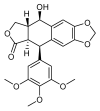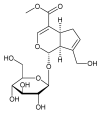A Review on Mechanistic Insight of Plant Derived Anticancer Bioactive Phytocompounds and Their Structure Activity Relationship
- PMID: 35566385
- PMCID: PMC9102595
- DOI: 10.3390/molecules27093036
A Review on Mechanistic Insight of Plant Derived Anticancer Bioactive Phytocompounds and Their Structure Activity Relationship
Abstract
Cancer is a disorder that rigorously affects the human population worldwide. There is a steady demand for new remedies to both treat and prevent this life-threatening sickness due to toxicities, drug resistance and therapeutic failures in current conventional therapies. Researchers around the world are drawing their attention towards compounds of natural origin. For decades, human beings have been using the flora of the world as a source of cancer chemotherapeutic agents. Currently, clinically approved anticancer compounds are vincristine, vinblastine, taxanes, and podophyllotoxin, all of which come from natural sources. With the triumph of these compounds that have been developed into staple drug products for most cancer therapies, new technologies are now appearing to search for novel biomolecules with anticancer activities. Ellipticine, camptothecin, combretastatin, curcumin, homoharringtonine and others are plant derived bioactive phytocompounds with potential anticancer properties. Researchers have improved the field further through the use of advanced analytical chemistry and computational tools of analysis. The investigation of new strategies for administration such as nanotechnology may enable the development of the phytocompounds as drug products. These technologies have enhanced the anticancer potential of plant-derived drugs with the aim of site-directed drug delivery, enhanced bioavailability, and reduced toxicity. This review discusses mechanistic insights into anticancer compounds of natural origins and their structural activity relationships that make them targets for anticancer treatments.
Keywords: anticancer bioactive phytocompounds; cytotoxic agents; neoplastic disease; proliferation; structure activity relationship (SAR).
Conflict of interest statement
The authors declare no conflict of interest.
Figures

















Similar articles
-
Cancer Chemotherapy via Natural Bioactive Compounds.Curr Drug Discov Technol. 2022;19(4):e310322202888. doi: 10.2174/1570163819666220331095744. Curr Drug Discov Technol. 2022. PMID: 35362385 Review.
-
Phytocompounds and Nanoformulations for Anticancer Therapy: A Review.Molecules. 2024 Aug 9;29(16):3784. doi: 10.3390/molecules29163784. Molecules. 2024. PMID: 39202863 Free PMC article. Review.
-
Podophyllotoxin derivatives as an excellent anticancer aspirant for future chemotherapy: A key current imminent needs.Bioorg Med Chem. 2018 Jan 15;26(2):340-355. doi: 10.1016/j.bmc.2017.11.026. Epub 2017 Nov 16. Bioorg Med Chem. 2018. PMID: 29269253 Review.
-
Anticancer Activity of Natural Compounds from Plant and Marine Environment.Int J Mol Sci. 2018 Nov 9;19(11):3533. doi: 10.3390/ijms19113533. Int J Mol Sci. 2018. PMID: 30423952 Free PMC article. Review.
-
Putative Anticancer Compounds from Plant-Derived Endophytic Fungi: A Review.Molecules. 2022 Jan 4;27(1):296. doi: 10.3390/molecules27010296. Molecules. 2022. PMID: 35011527 Free PMC article. Review.
Cited by
-
Phytochemicals as Chemo-Preventive Agents and Signaling Molecule Modulators: Current Role in Cancer Therapeutics and Inflammation.Int J Mol Sci. 2022 Dec 12;23(24):15765. doi: 10.3390/ijms232415765. Int J Mol Sci. 2022. PMID: 36555406 Free PMC article. Review.
-
Biosynthesis of anticancer phytochemical compounds and their chemistry.Front Pharmacol. 2023 Mar 9;14:1136779. doi: 10.3389/fphar.2023.1136779. eCollection 2023. Front Pharmacol. 2023. PMID: 36969868 Free PMC article. Review.
-
Heavy metal toxicity in poultry: a comprehensive review.Front Vet Sci. 2023 Jun 29;10:1161354. doi: 10.3389/fvets.2023.1161354. eCollection 2023. Front Vet Sci. 2023. PMID: 37456954 Free PMC article. Review.
-
Vincamine, from an antioxidant and a cerebral vasodilator to its anticancer potential.Bioorg Med Chem. 2023 Sep 7;92:117439. doi: 10.1016/j.bmc.2023.117439. Epub 2023 Aug 9. Bioorg Med Chem. 2023. PMID: 37579526 Free PMC article. Review.
-
Bioactives derived from Brazilian native flora with antimicrobial and anticancer activity.BMC Complement Med Ther. 2025 Mar 11;25(1):102. doi: 10.1186/s12906-025-04787-0. BMC Complement Med Ther. 2025. PMID: 40069678 Free PMC article.
References
-
- Prance G.T. Floristic inventory of the tropics: Where do we stand? Ann. Mo. Bot. Gard. 1977;64:659–684. doi: 10.2307/2395293. - DOI
-
- Mukherjee B. Nanotherapeutics-for-the-Treatment-of-Hepatocellular-Carcinoma. Nanother. Treat. Hepatocell. Carcinoma. 2022;29:219–247.
Publication types
MeSH terms
Substances
LinkOut - more resources
Full Text Sources
Medical
Miscellaneous

